Lecture 7
Agenda

Slides
Video
Paper
How does a network function
- 2 parts to n/w
- core
- switching devices
- layer 2/3 switches
- gateways
- facilitates communication b/w end hosts
- edges
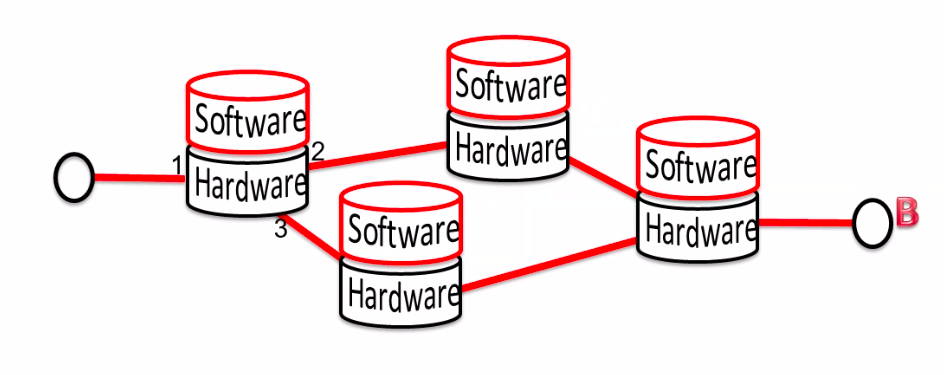
- core
- each switch has some s/w and h/w part
-
forwarding happens hop by hop
- Routing
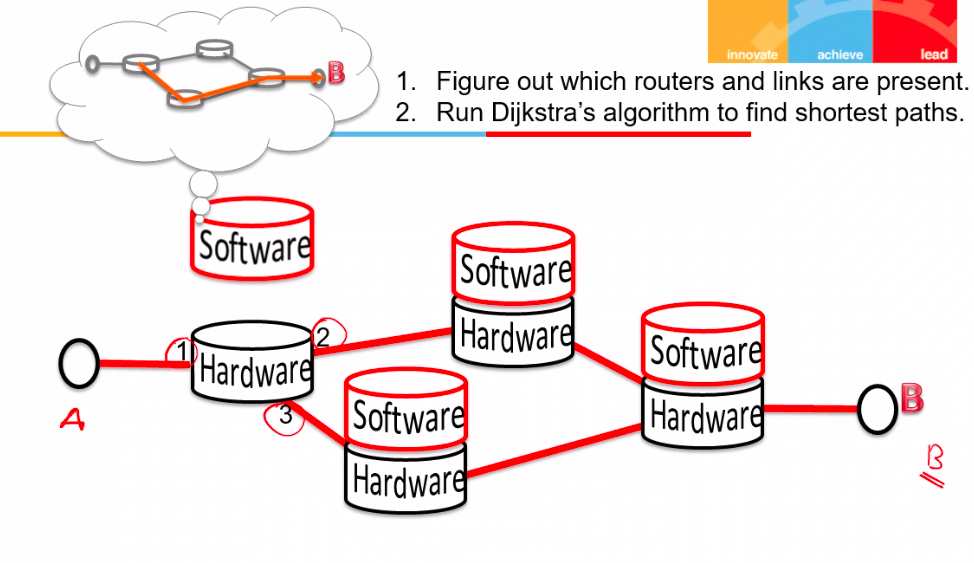
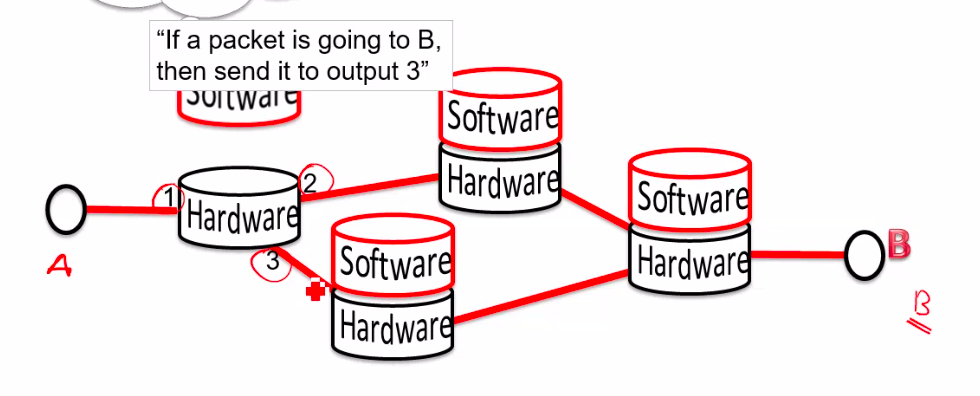
- calculated thing is now stored in h/w
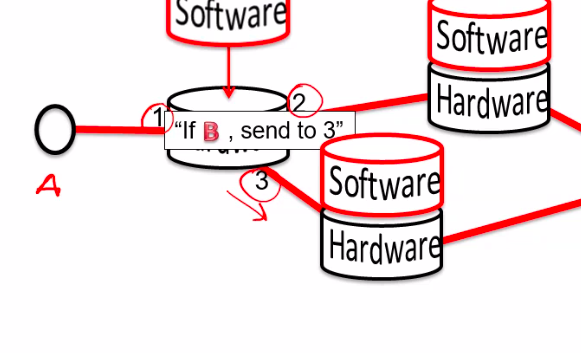
- same thing is done by other switches
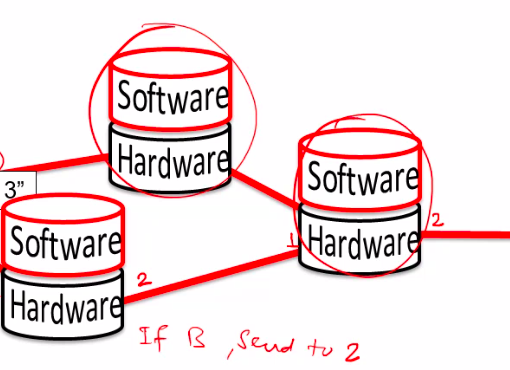
- A creates a packet for B
-
switch match packet’s Ip in routing table and forwards
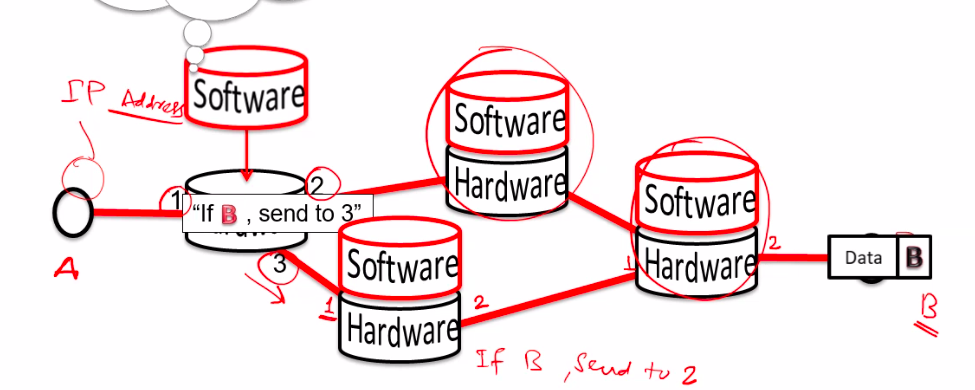
- Software part is control plane
- Hardware part is Data plane / Forwarding plane
- software part is basically divided into 2 parts
- one for functionalities = routin, pkt filtering etc = control plane
- second for = link wts dekhna and all management plane
- this is for legacy n/w
- each switch has its own control, data and mgmt plane
Networking planes

- f/wing state = routing entry, etc
-


- ACL = Acces Control List
Switch Hardware
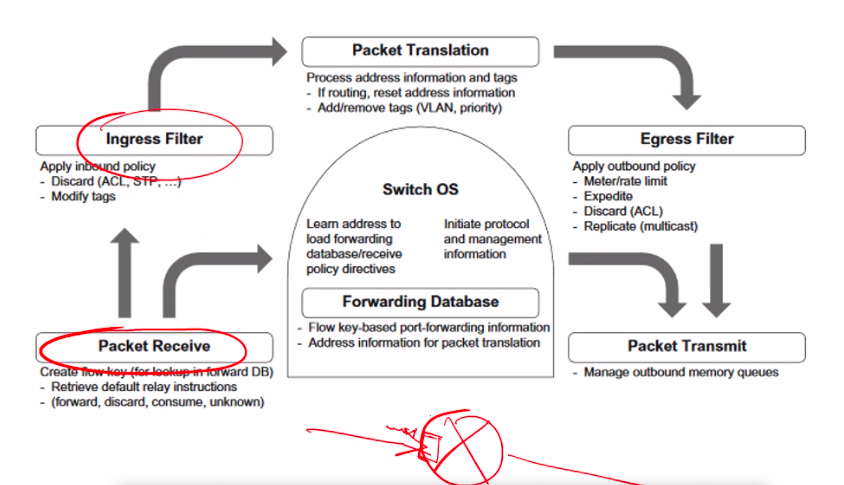
- ingress
- checks if the pkt should be discarded and all
- translation
- attach some tags or priority
- used to internally process, within that n/w
- once the pkt goes out of the n/w, the tags and all r removed
Network Switch Complexity
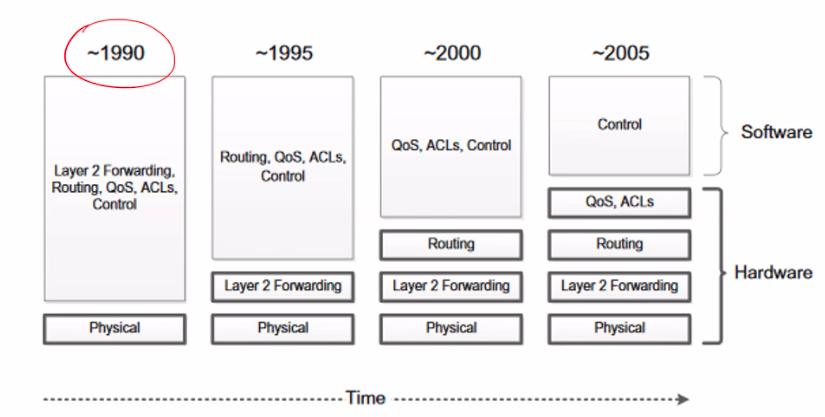
Limitations of Legacy Networks
- Research stagnation due to close interfaces for n/wing devices
- only n/wing vendors themselves can write the s/w for their own n/wing devices
- data plane is remaining same, for changing functionalities, vendors released new switches
- Control plane abstraction for the whole n/w is missing
- each n/w has its own control and data plane
- centralized view helps in btr resource mgmt
- uncoordinated control
- cannot control which router updates first
- interacting protocols and mechanisms
- routing, addressing, access control, QoS
Idea: an OS for Networks
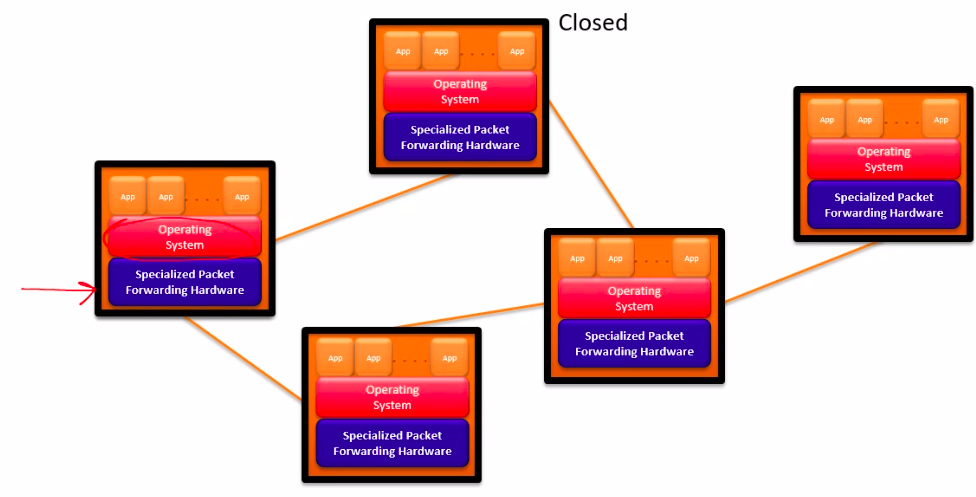
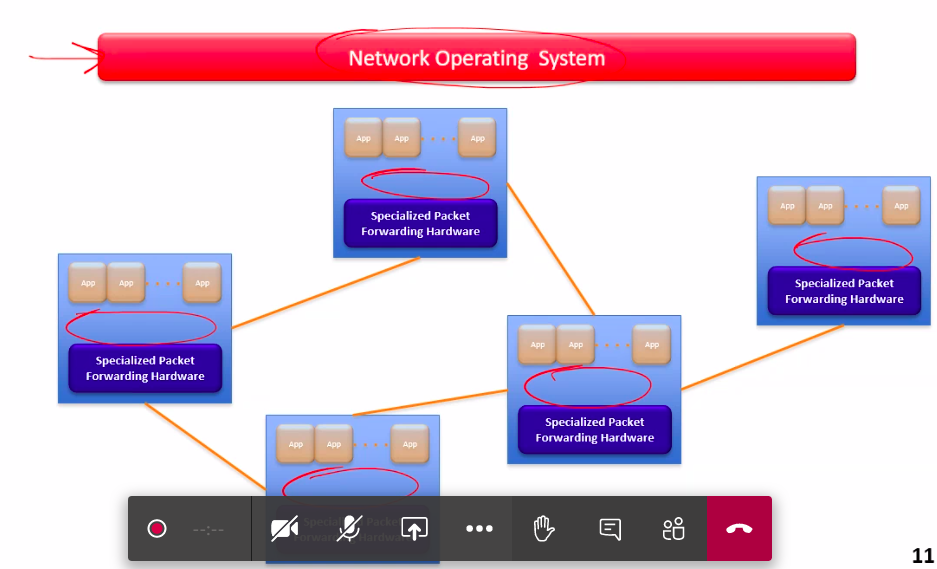
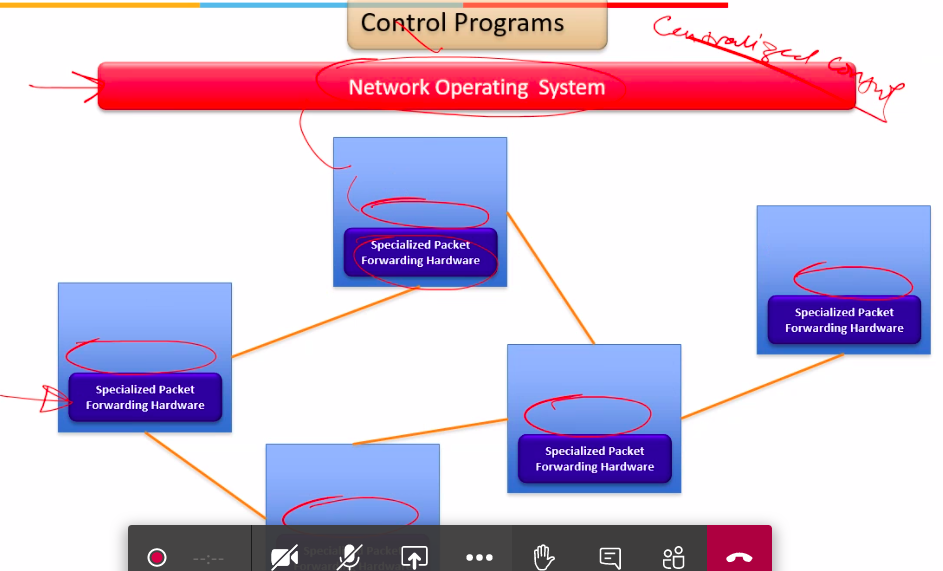
- so we removed both, OS, and apps from the routers, routers just do forwarding
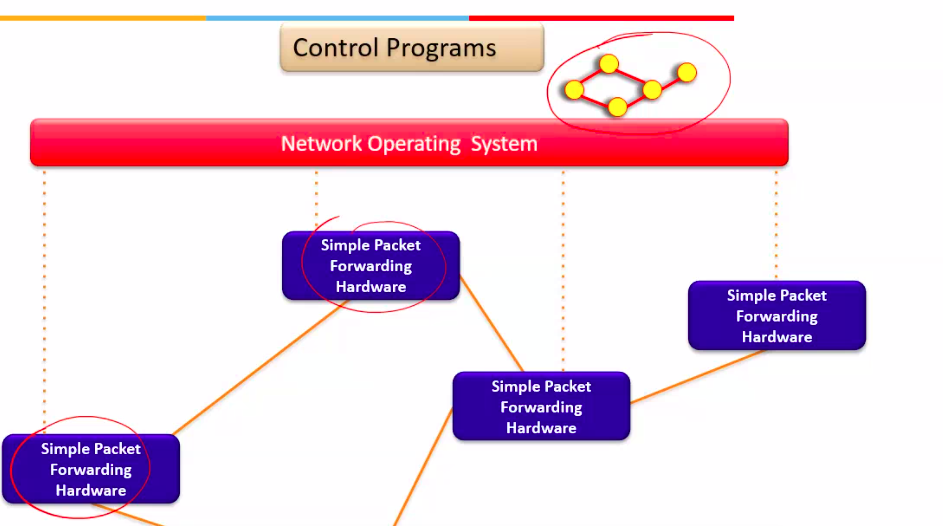
- now control program has a global view of the n/w
- so it can give btr decisions
- program passes to os, and os enters rules in switches
- initially switches talked to each other and did a horizontal communication
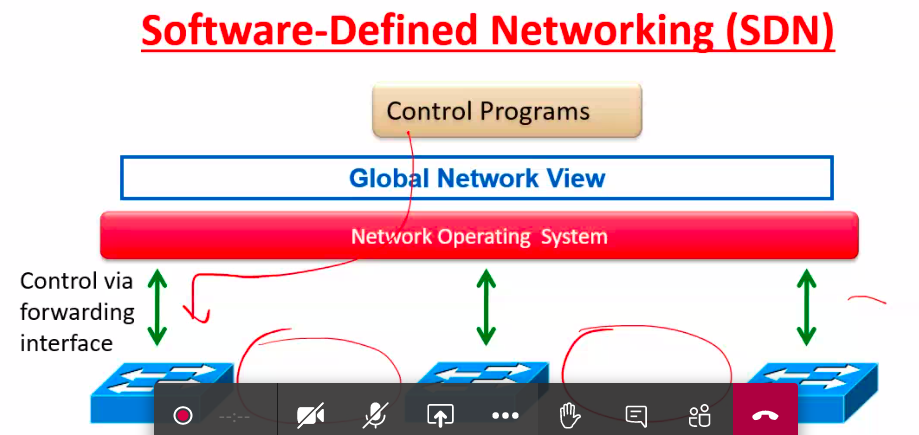
Network OS
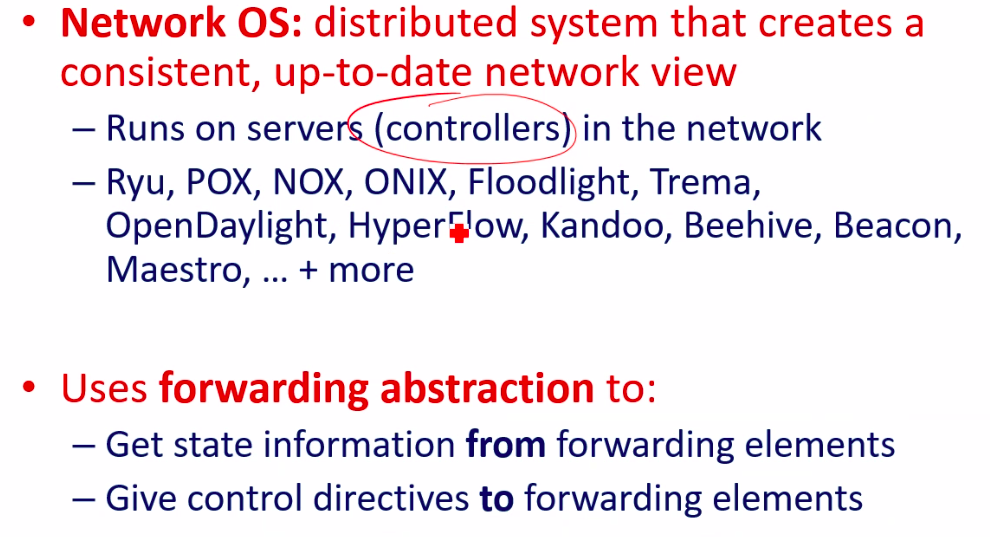
What is SDN
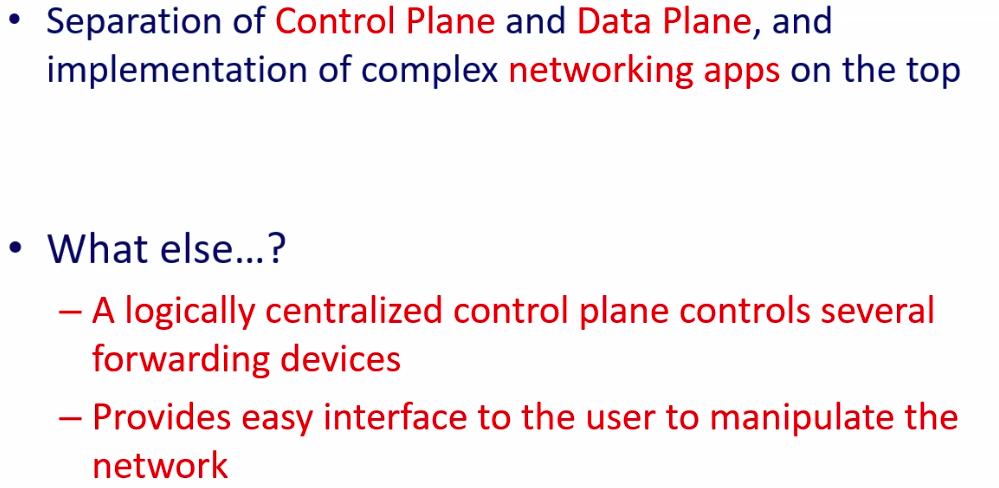
Three layered SDN Architecture
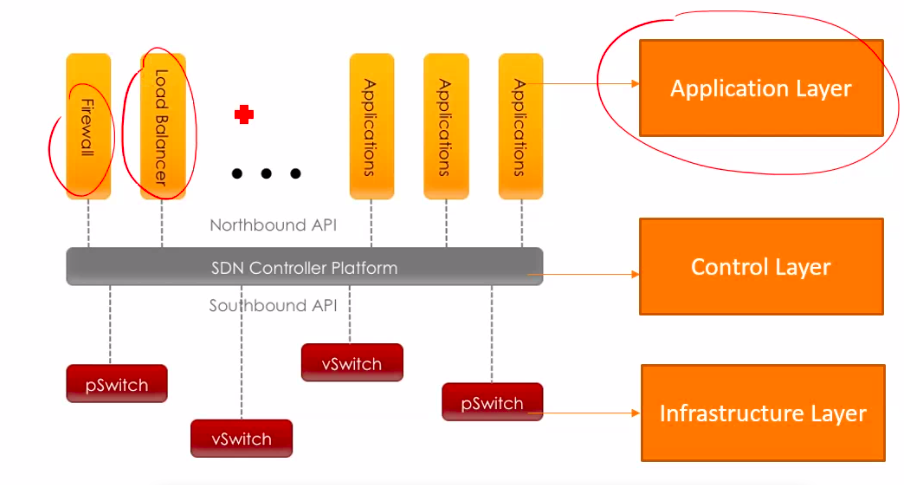
OpenFlow
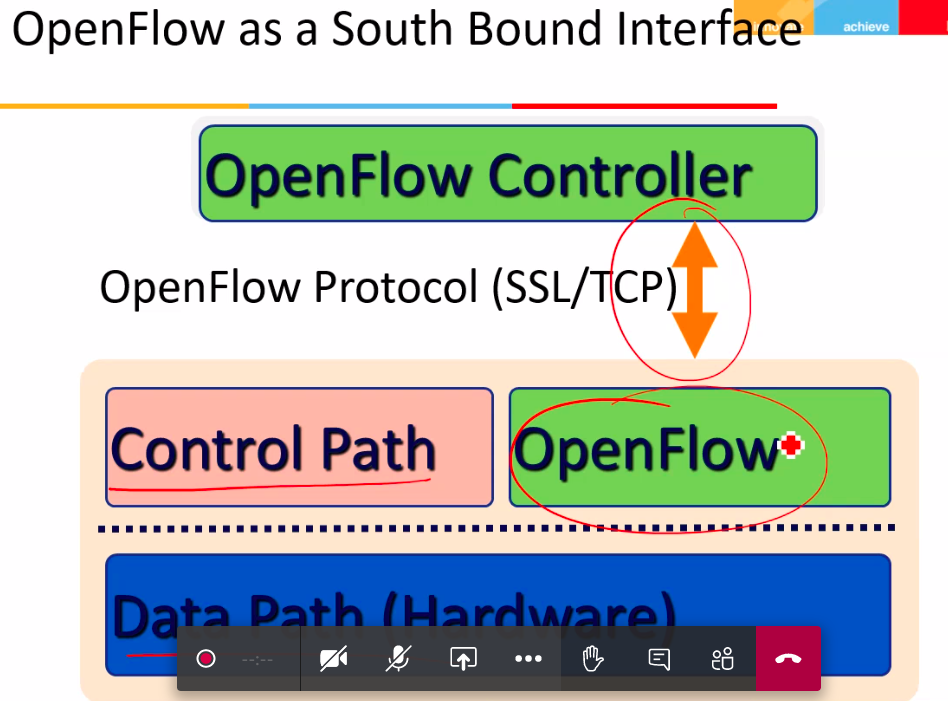
Switching
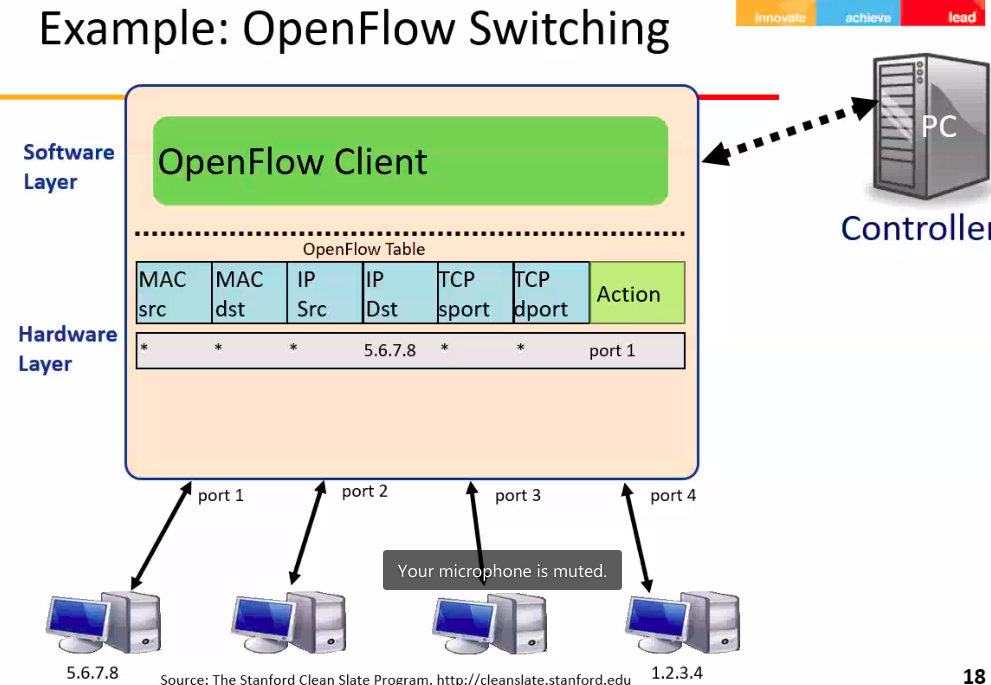
Flow Rules
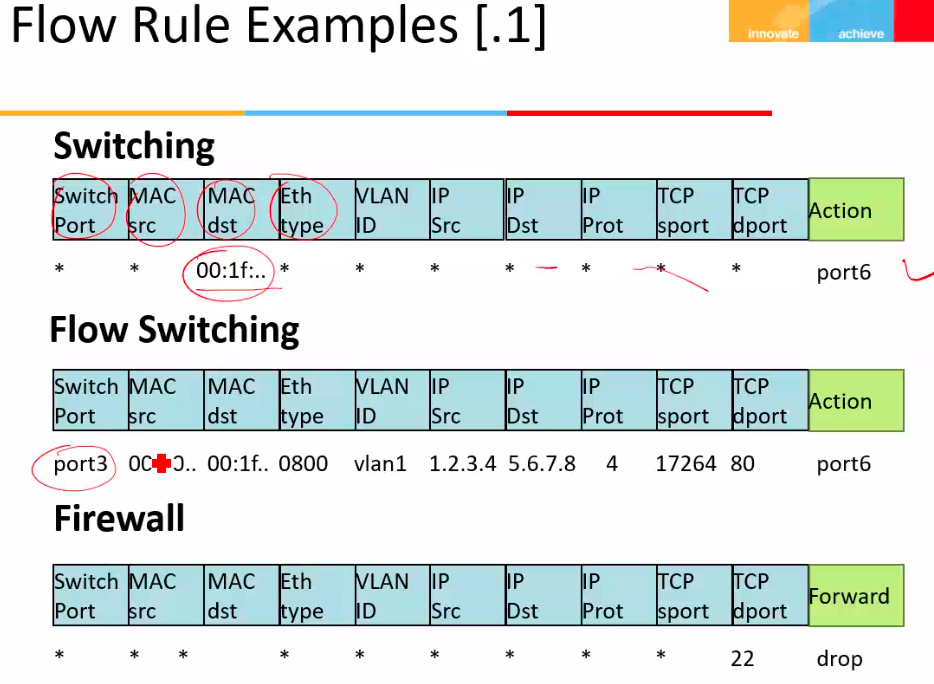
Next Class
